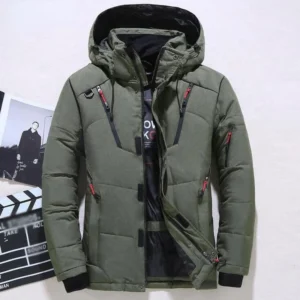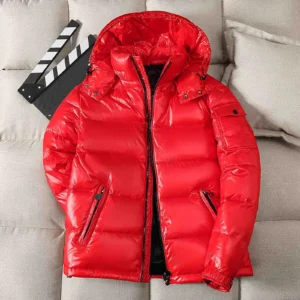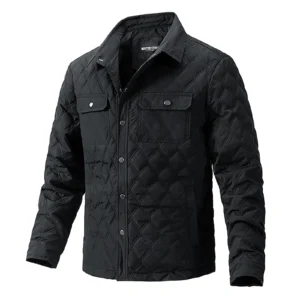Introduction
When shopping for premium winter outerwear, the terms “sheepskin” and “shearling” often appear interchangeably, creating confusion for even the most discerning buyers. This distinction isn’t merely semantic—it significantly impacts your comfort, style, and investment. Both materials offer exceptional warmth and luxurious feel, but their distinct characteristics make each suitable for different needs and preferences.
The confusion stems from their related origins, yet understanding the comprehensive differences between shearling and sheepskin is crucial for making an informed purchase. With premium outerwear representing a significant investment, knowing exactly what you’re buying ensures satisfaction with both performance and aesthetics.
In this guide, we’ll explore the nuanced differences between these premium materials, examining their unique properties, performance capabilities, maintenance requirements, and cost considerations. By the end, you’ll have the knowledge to confidently select the perfect luxury outerwear for your specific lifestyle and preferences.
What is Sheepskin? Understanding the Natural Material
Sheepskin refers to the processed hide of a mature sheep with the wool still attached. The material undergoes a specialized tanning process that preserves both the leather and wool components, creating a durable, insulating material ideal for outerwear. The hide comes from fully grown sheep, which contributes to its distinctive characteristics and quality profile.
During processing, manufacturers can trim the wool to different lengths depending on the intended application, offering versatility across various products. The natural composition provides several key advantages:
- Texture that varies significantly based on sheep breed and processing methods
- Natural wool length that may be variable unless specifically processed to uniform specifications
- Exceptional natural insulation properties due to wool’s air-trapping structure
- Versatility that makes it suitable for numerous applications beyond just outerwear
Visually, traditional sheepskin coats present a rustic yet refined appearance, often with visible variations in the wool’s texture and color. The leather side typically has a slightly rugged finish that develops character over time, while the wool interior provides plush comfort against the body. This natural variation contributes to the unique fundamental differences between sheepskin and shearling, giving each garment its own distinctive character.
What is Shearling? A Premium Sheepskin Variant
Shearling represents a specialized premium category within sheepskin products, specifically derived from lambskin that has been shorn only once before processing. This distinction is crucial—the young age of the animal results in exceptionally soft wool and supple leather that cannot be replicated in materials from mature sheep.
The distinctive tanning process for shearling preserves the wool while trimming it to a uniform length, creating the material’s characteristic consistent appearance. This specialized processing results in a premium material that justifies its higher market positioning within luxury outerwear.
Key characteristics that distinguish shearling coats include:
- Exceptionally soft and plush texture due to the lamb’s young age and limited exposure to environmental elements
- Distinctive dual surfaces featuring dense wool interior with suede or smooth leather exterior
- Uniform wool length creating a consistent, refined appearance throughout the garment
- Premium feel that offers immediate recognition of quality when handled
Many buyers wonder whether sheepskin and shearling are the same material, and while they share origins, these distinctions in source animal age and processing create significantly different end products. Shearling’s premium qualities explain why it commands higher prices and appears prominently in luxury fashion collections, offering unparalleled comfort and refined aesthetics.
Material Differences: Sheepskin vs Shearling Compared
| Characteristic | Sheepskin | Shearling |
|---|---|---|
| Source | Mature sheep | Young lamb (first shearing) |
| Texture | Varies with breed; potentially coarser | Exceptionally soft and plush |
| Wool consistency | Can be variable | Uniform and even |
| Weight | Generally heavier | Typically lighter and more supple |
| Durability | Highly durable with proper care | Excellent durability with slightly more delicate suede |
| Warmth rating | Very warm | Extremely warm with better insulation |
| Typical appearance | Rustic, natural variation | Refined, consistent luxury aesthetic |
| Price point | Premium | Ultra-premium |
The most significant difference lies in the overall feel and performance of each material. Sheepskin from mature sheep delivers outstanding durability and often a more rustic, lived-in aesthetic that many appreciate for casual outerwear. Its variable wool length can create a more natural, textured appearance.
Shearling, by contrast, offers unmatched softness against the skin and a more refined appearance thanks to the uniform wool length and the supple quality of lambskin. This makes it particularly well-suited for winter wear comparisons where both performance and aesthetics matter equally.
The weight difference becomes apparent when trying on garments made from each material—shearling typically feels lighter while maintaining equal or superior warmth, making it exceptionally comfortable for all-day wear. This weight-to-warmth ratio represents one of shearling’s most distinctive advantages over traditional sheepskin.
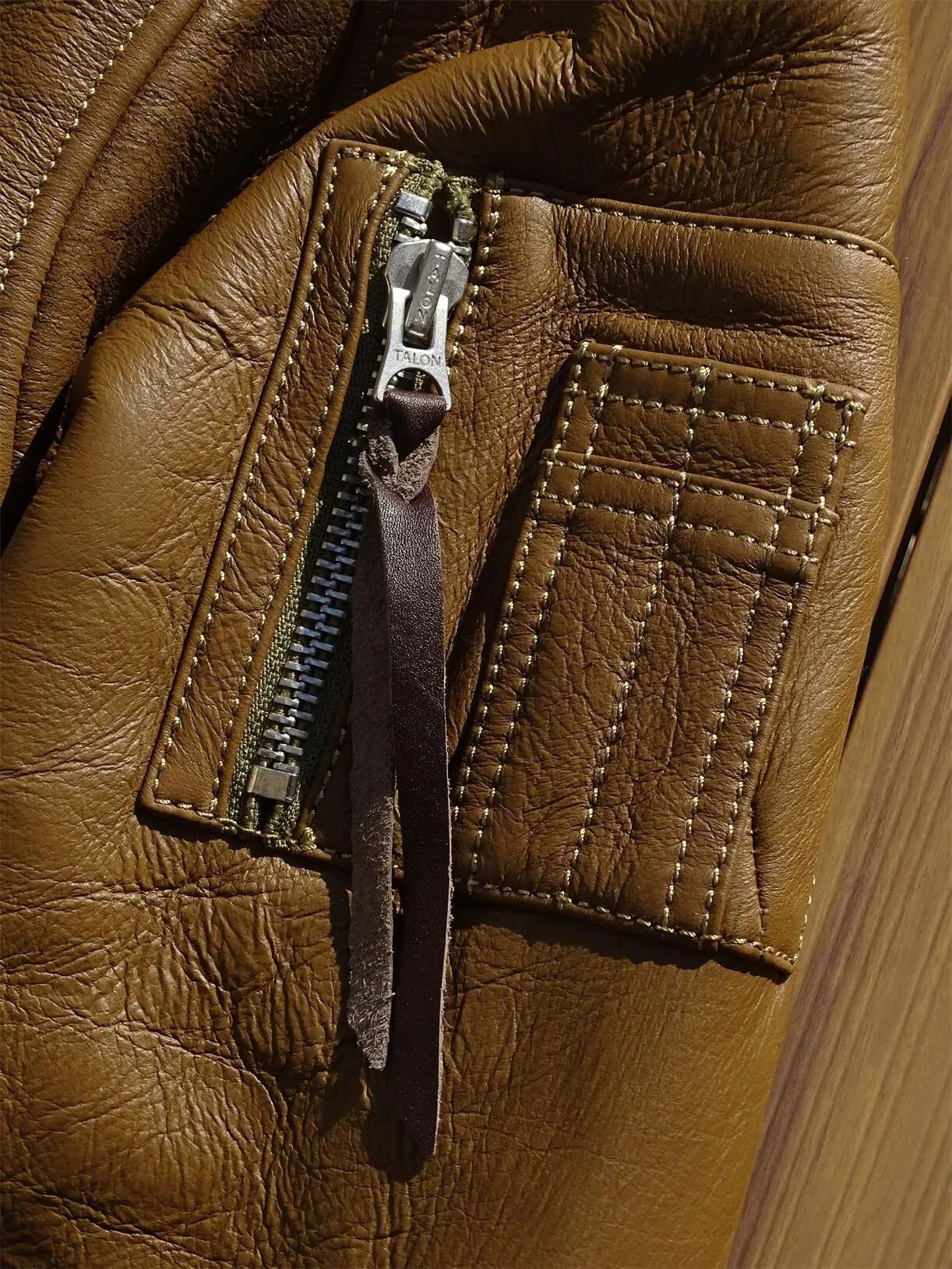
Performance Features: Warmth, Comfort, and Durability
Thermal Insulation
Both materials excel at thermal regulation, but with subtle differences. Shearling generally offers superior warmth-to-weight ratio, providing exceptional insulation even in extremely cold conditions (effective to around -20°F/-29°C). The dense, uniform wool creates consistent insulation throughout the garment. Traditional sheepskin performs admirably in cold conditions (typically comfortable to around 0°F/-18°C) but may have slight variations in insulation due to the natural wool pattern.
Moisture Management
The comparative warmth properties of both materials are enhanced by excellent moisture-wicking capabilities. Both naturally draw moisture away from the body, but shearling’s finer wool fibers often perform this function more efficiently. This moisture management significantly enhances comfort during activity, preventing the clammy feeling often associated with synthetic materials.
Breathability
Both materials demonstrate superior breathability compared to synthetic alternatives, allowing air circulation while maintaining warmth. This breathability makes both options suitable for variable conditions where temperature regulation matters. Understanding different insulation types and their warmth properties helps explain why natural materials like sheepskin and shearling outperform many synthetic alternatives in comfort.
Durability and Aging
With proper care, both materials develop character over time. Sheepskin tends to show wear patterns that many owners appreciate as adding character to the garment. Shearling maintains its appearance longer with appropriate maintenance but requires more careful handling of the suede exterior. Both materials can last decades when properly maintained, making them true investment pieces.
Style and Aesthetics: Visual Appeal and Fashion Versatility
Sheepskin and shearling each present distinctive aesthetic qualities that influence their styling in contemporary fashion. Sheepskin typically projects a more rugged, adventurous image with its naturally varied texture and often visible seams. This rustic quality makes it particularly well-suited for casual outerwear that complements outdoor-inspired wardrobes.
Shearling, by contrast, embodies refined luxury with its consistent texture and smooth lines. The classic shearling jacket has become an iconic fashion statement that bridges casual and formal wear with its sophisticated silhouette and premium appearance. The suede exterior offers a velvet-like finish that elevates any outfit, while the uniform wool lining creates a visually consistent interior.
The visual indicators of quality differ between materials as well. In sheepskin, even coloration of the leather and dense, intact wool signify premium quality. For shearling, uniform wool length, butter-soft suede, and impeccable seam work distinguish superior garments. Both materials develop a beautiful patina over time, with sheepskin often developing more visible character marks that tell the story of the garment’s journey with its owner.
As fashion statements, shearling tends to appear more frequently in designer collections for its luxurious presentation, while sheepskin maintains strong popularity in heritage and outdoor-influenced fashion lines. Both materials transition well between casual and smart-casual contexts, though shearling more easily adapts to dressier occasions.
Common Applications: Best Uses for Each Material
Both sheepskin and shearling excel across various product categories, but each material shines in specific applications based on its unique properties.
Outerwear
Sheepskin performs exceptionally well in rugged outerwear designs like ranch coats and work jackets where durability is paramount. Its natural variation creates distinctive casual pieces that improve with age.
Shearling dominates the luxury outerwear category, particularly in refined bomber jackets, elegant overcoats, and fashion-forward designs. The leather and shearling coat combinations offer unmatched sophistication while delivering exceptional performance in cold weather.
Footwear
Sheepskin excels in hard-wearing boots and outdoor slippers where durability matters most. Its natural variation works well in rustic designs.
Shearling shines in premium footwear linings, luxury slippers, and high-end winter boots where the consistent, soft texture provides immediate comfort and refined appearance.
Accessories & Home Goods
Sheepskin’s durability makes it ideal for heavily used items like rugs, seat covers, and mittens that face regular wear. Its natural character adds warmth to interior spaces.
Shearling’s luxury appeal makes it perfect for premium accessories like designer earmuffs, gloves, and limited-edition home goods where tactile pleasure and aesthetic refinement matter most.
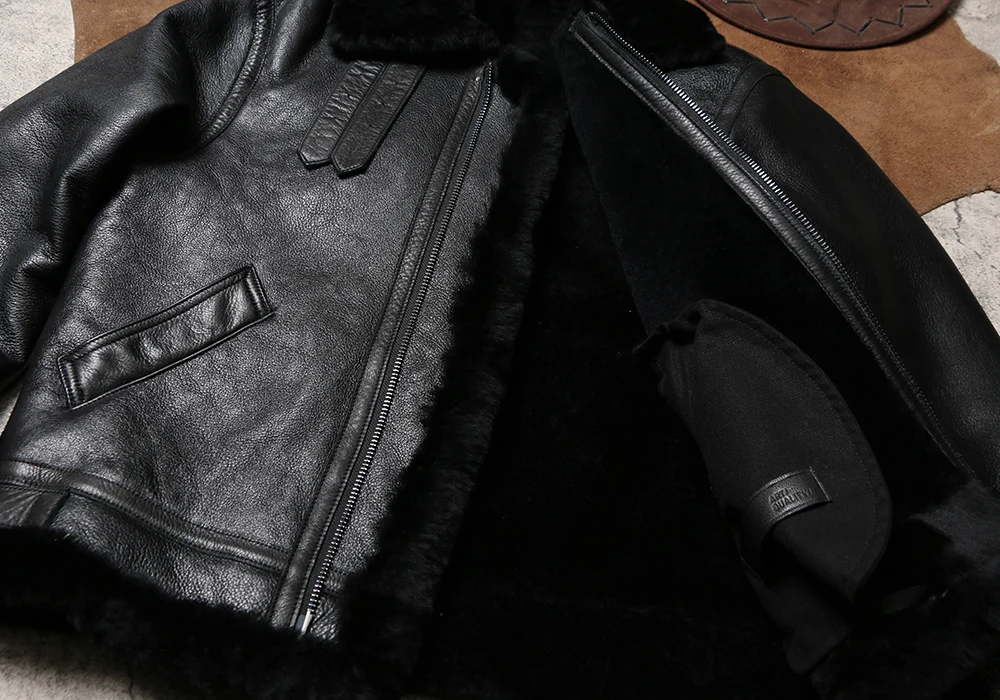
Investment Value: Price Considerations and Long-Term Worth
The significant price difference between sheepskin and shearling products reflects several key factors that influence both immediate cost and long-term value. Understanding these elements helps buyers make informed decisions about their investment in premium outerwear.
Key factors affecting price include:
- Source material quality: Shearling’s exclusive use of first-sheared lambskin inherently limits supply and increases cost
- Processing complexity: Shearling requires more meticulous processing to achieve uniform wool length while preserving leather suppleness
- Construction techniques: Premium garments feature reinforced seams, specialized stitching, and careful pattern matching
- Design intricacy: Complex designs with multiple panels or decorative elements increase manufacturing time and material usage
- Market positioning: Luxury brands command premium pricing that reflects both material quality and brand prestige
From a long-term perspective, both materials offer excellent value when considering cost-per-wear calculations. Quality sheepskin garments often start at $500-800, while premium shearling pieces from reputable manufacturers like Metro Cloak typically begin around $1,000-1,500 and can exceed $3,000 for designer versions.
The winter coat options available demonstrate this range, with sheepskin representing an excellent entry point into premium natural materials, while shearling embodies the pinnacle of luxury outerwear. Both materials maintain good resale value when properly maintained, with well-kept shearling garments often retaining up to 60-70% of their value after several years of careful use.
Care and Maintenance: Preserving Your Investment
Proper maintenance significantly extends the lifespan of both sheepskin and shearling garments, protecting your investment while maintaining performance and appearance. Each material requires specific care approaches.
Daily Care
- Air out your garment after each wear by hanging it in a well-ventilated area away from direct heat and sunlight
- Brush the wool gently with a soft-bristled brush to remove dust and restore loft
- Address minor surface soil immediately with a clean, damp cloth, blotting rather than rubbing
Storage
- Store on padded hangers to maintain shape during off-season
- Use breathable garment bags rather than plastic
- Place cedar blocks nearby (not in direct contact) to deter moths
- Never compress the garment for extended periods
Cleaning
- Spot clean small stains immediately using specialized wool/leather cleaners
- For sheepskin, focus on gentle circular motions when spot cleaning
- For shearling’s suede exterior, use a suede brush in one direction only
- Seek professional cleaning for significant soiling or comprehensive refreshing
- Never machine wash or fully submerge either material
Common Mistakes to Avoid
- Exposing garments to prolonged direct sunlight which fades leather
- Using regular detergents or household cleaners that damage natural oils
- Over-brushing or aggressive cleaning that can damage wool fibers
- Storing in plastic which traps moisture and can lead to mildew
The choice between sheepskin and shearling for winter should consider your willingness to perform proper maintenance. Both materials will reward careful maintenance with decades of service, though shearling typically requires slightly more attentive care for its suede exterior.
Making Your Decision: Which Material is Right for You?
When deciding between sheepskin and shearling, consider these key factors to determine which material best suits your specific needs:
Climate Considerations
- For extreme cold environments (below 0°F/-18°C): Shearling offers superior insulation
- For variable conditions with moderate cold: Either material performs well, with sheepskin offering excellent versatility
- For primarily wet cold climates: Consider sheepskin with appropriate water-resistant treatment
Lifestyle Factors
- Active outdoor use with exposure to rough conditions: Sheepskin’s durability may be advantageous
- Urban environments with emphasis on style: Shearling’s refined appearance offers an edge
- Need for versatility across casual to business casual settings: Shearling typically transitions better
Personal Preferences
- If you prefer garments that develop unique character with wear: Sheepskin develops more visible patina
- If consistent appearance and luxury feel are priorities: Shearling maintains its refined look longer
- If weight is a concern: Shearling typically offers better warmth-to-weight ratio
Budget Realities
- Premium but more accessible investment: Quality sheepskin offers excellent value
- Ultimate luxury with uncompromising quality: Shearling represents the pinnacle of natural insulation
When examining garments, knowing how to identify genuine shearling or sheepskin prevents disappointing purchases. Look for consistent wool density, supple leather, quality stitching, and appropriate weight that signals authentic materials.
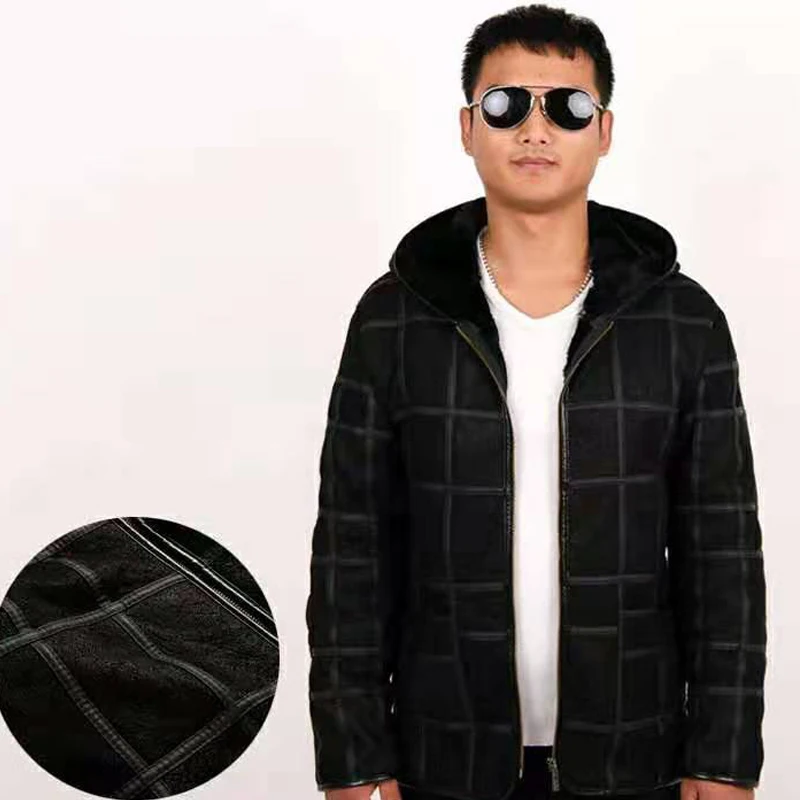
Beyond Traditional Products: Innovative Uses for Sheepskin and Shearling
While coats and jackets remain the most recognized applications, innovative designers continue to expand the possibilities for these premium materials. Contemporary fashion houses have begun incorporating shearling accents into unexpected items like sneakers, handbags, and even summer-weight garments through strategic paneling techniques.
Sustainable practices are transforming production methods, with ethical sourcing and zero-waste cutting techniques reducing environmental impact. Some manufacturers now offer fully traceable sourcing, allowing consumers to verify the ethical standards behind their luxury purchases.
Technological advancements have also improved these materials’ performance capabilities. New tanning processes enhance water resistance without compromising breathability, while specialized treatments improve stain resistance and longevity. These innovations make both materials more practical for everyday wear while maintaining their natural benefits.
The versatility of these materials continues to expand through techniques like reversible construction, removable components, and modular design approaches that adapt to changing conditions. This adaptability makes sheepskin and shearling increasingly valuable for cold weather performance, offering practical luxury that justifies the investment.
Mens Heavy Winter Coat, Mens Insulated Coat, Mens Parka Coat
Price range: $175.52 through $237.36 Select options This product has multiple variants. The options may be chosen on the product pageMens Big and Tall Winter Coats, Mens Down Coat, Mens Hooded Winter Coat, Mens Puffer Coat
Price range: $126.44 through $217.01 Select options This product has multiple variants. The options may be chosen on the product pageMens Big and Tall Winter Coats, Mens Hooded Winter Coat
Price range: $80.32 through $106.68 Select options This product has multiple variants. The options may be chosen on the product pageMens Cashmere Overcoat, Mens Hooded Winter Coat, Mens Wool Blend Coat
Price range: $128.72 through $139.68 Select options This product has multiple variants. The options may be chosen on the product pageMens Hooded Winter Coat, Mens Insulated Coat, Mens Puffer Coat, Mens Quilted Coat
Price range: $139.88 through $177.72 Select options This product has multiple variants. The options may be chosen on the product pageMens Double Breasted Pea Coat, Mens Hooded Winter Coat, Mens Quilted Coat
Price range: $81.00 through $108.48 Select options This product has multiple variants. The options may be chosen on the product page
Frequently Asked Questions About Sheepskin and Shearling
Are sheepskin and shearling the same thing?
No. While related, shearling specifically comes from lambs during their first shearing, creating a finer, softer material with uniform wool length. Sheepskin comes from mature sheep, offering excellent durability but with potentially variable wool characteristics.
How do I handle my sheepskin or shearling garment getting wet?
If your garment becomes wet, gently blot (don’t rub) excess moisture with absorbent towels. Allow it to air dry naturally away from direct heat sources. Once dry, restore the nap with a soft brush. For shearling, additional suede care may be needed once dry.
What is the expected lifespan of quality sheepskin and shearling products?
With proper care, premium sheepskin garments typically last 7-10 years of regular wear, while quality shearling pieces can remain beautiful for 10-15 years or more. Both can become cherished heirlooms when maintained correctly.
How can I identify authentic sheepskin or shearling?
Authentic materials have consistent wool density, appropriate weight, supple leather with natural variations, and a distinctive natural scent. Faux versions typically feel synthetic, have uniform appearance lacking natural character, and often incorporate visible synthetic backing.
Can sheepskin or shearling be suitable for people with wool allergies?
Individuals with wool allergies may react to both materials since they contain natural wool fibers. However, the processing reduces allergens compared to raw wool, and the leather barrier in properly constructed garments minimizes direct contact with wool against skin for many styles.
What’s the difference between “faux shearling” and authentic materials?
Authentic shearling comes from young sheep with wool attached through specific tanning processes. Faux versions use synthetic fibers to mimic the appearance but lack the natural insulation, breathability, moisture-wicking properties, and distinctive feel of genuine shearling.



